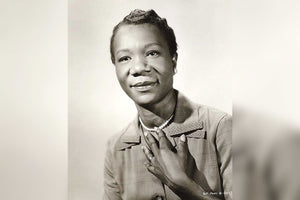Birthday: February 10, 1883
Who is Edith Clarke?
Edith Clarke, born in 1883, was a distinguished American electrical engineer who was a true trailblazer in her field. Her specialty was in electrical power system analysis. She earned her electrical engineering degree from the Massachusetts Institute of Technology (MIT), becoming the first woman to achieve such a feat.
She set the path for women in the engineering field by being the first woman in the United States to be employed as a professional electrical engineer. Later on, at the University of Texas, she became the first female Professor of Electrical Engineering in America.
Circuit Analysis of A-C Power Systems, the seminal book she wrote in 1943, became a highly influential textbook in the power engineering field. It became a foundational educational book for electrical engineers for many years.
Five Facts About Edith Clarke
- Edith Clarke was the first female engineer to be professionally recognized by the Tau Beta Pi Association, the oldest engineering honor society in America.
- She became the first woman to deliver a presentation before the American Institute of Electrical Engineers in 1926 and became the first female Fellow of the institute in 1948.
- As a result of her many original works in system stability and circuit analysis, the Society of Women Engineers awarded her a lifetime award in 1954.
- In 1921, she invented the Clarke calculator, a simple graphical calculator that enabled electrical engineers to solve electrical power transmission line problems ten times faster than the previous methods.
- As a prolific writer, she produced many writings and publications on power distribution and wrote comprehensive textbooks that engineering schools and colleges often used.
Inspirational Quotes from Edith Clarke
“There is no demand for women engineers, as such, as there are for women doctors; but there’s always a demand for anyone who can do a good piece of work.”
Early Life and Education
Edith Clarke was born on February 10, 1883, to a prosperous family in Ellicott City, a small farming community in Howard County, Maryland. Her parents were Ridgely Clarke, a lawyer, and Susan Dorsey Owings. She had eight other siblings.
With the death of her mother when she was just 12 years old, she became orphaned. Her father had died five years earlier. For a while, her uncle served as the legal guardian and raised Edith and her siblings.
The uncle sent her to Brierley Hall, a girls' boarding school in Montgomery County where she studied English literature, Latin, and history. Additionally, her training in algebra, geometry, and arithmetic would prove instrumental in her future career.
On turning 18, she inherited a small portion of her parents’ wealth and used the money to finance her education at Vassar College. There, she studied mathematics and astronomy and graduated with Phi Beta Kappa honors in 1908.
Career
Upon graduation, she became a teacher at a private girls’ school in San Francisco where she taught mathematics and physics. She later moved to Marshall College.
In 1911, she enrolled at the University of Wisconsin-Madison as a civil engineering student. She left after a year to work as a Computer Assistant in the American Telephone and Telegraph Company (AT&T) under Dr. George Campbell.
At AT&T, Campbell’s work involved the application of mathematical methods in the solving of problems associated with the transmission of electricity over long distances. Captivated by this work, Edith started attending night classes at Columbia University studying electrical engineering.
She left AT&T in 1918 to study at MIT. A year later, she became the first woman to be awarded a master's degree in Electrical Engineering from the institute. However, her success at MIT did not guarantee her a job as employers were hesitant to hire a female engineer.
She was able to find work at General Electric as a supervisor of "human computers" in the Turbine Engineering Department. These were women who calculated the mechanical stresses in turbines. She still wasn't able to practice her true passion. Thus, in 1921, she took leave and went to Turkey.
In Turkey, she became a Professor of Physics at the Constantinople Women's College and taught young women. She returned to the United States in 1922 and was re-hired as a salaried electrical engineer by the General Electric in the Central Station Engineering Department. She worked diligently for several years before retiring in 1945.
She returned to teaching upon retirement in 1947, becoming a faculty member of the Electrical Engineering Department at the University of Texas. After teaching for ten years, she retired in 1957.
Legacy and Death
Edith was a pioneer in data analysis. Her calculator would solve problems involving electric power transmission lines. It could help solve distances as long as 250 miles.
The paper she delivered before the American Institute of Electrical Engineers provided a means of modeling large power systems and analyzing their behavior. She also helped in the designing and building of hydroelectric dams in the West Hoover Dam.
She died at the age of 76 on October 29, 1959. In 2015, she received a posthumous honor by being inducted into the National Inventors of Fame.
![]() Fast Shipping
Fast Shipping![]() Subscribe to our Newsletter
Subscribe to our Newsletter![]() 🌟 New Global Competition 🌟
🌟 New Global Competition 🌟















